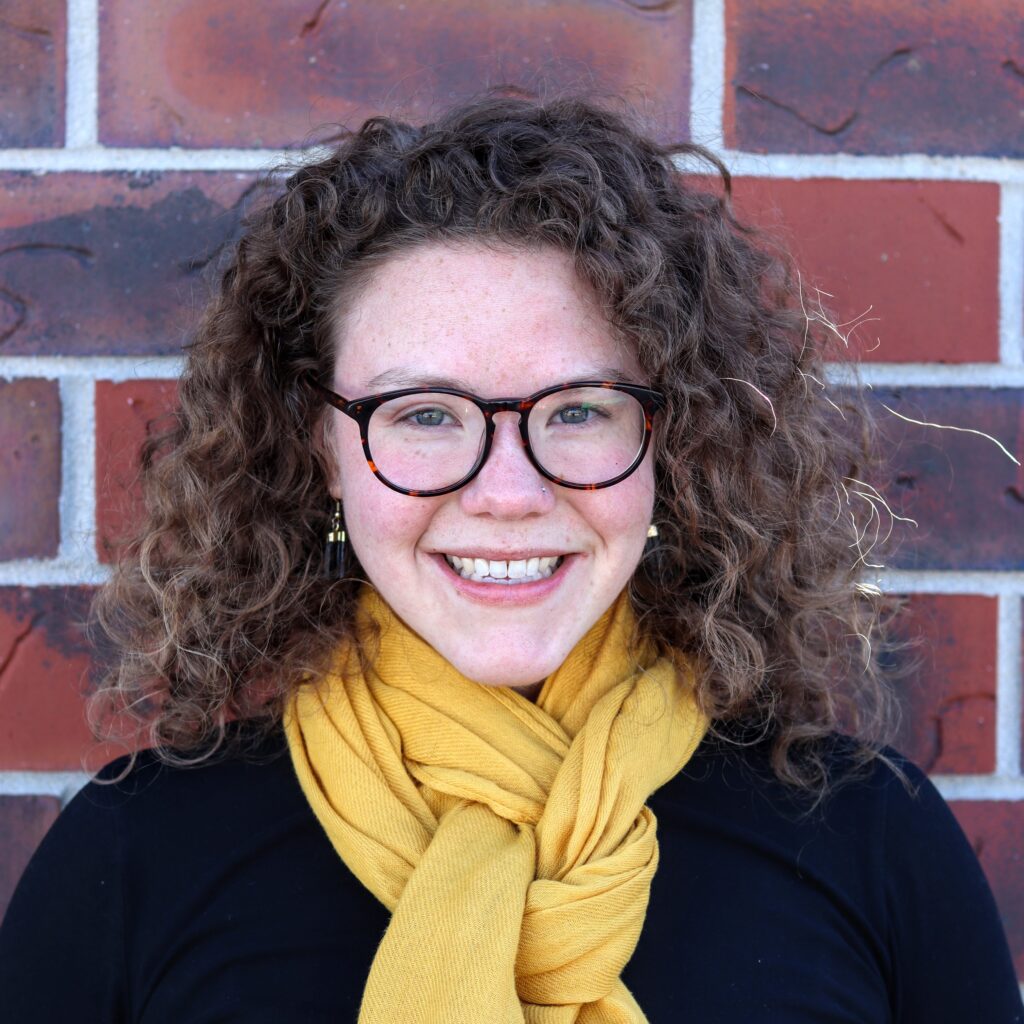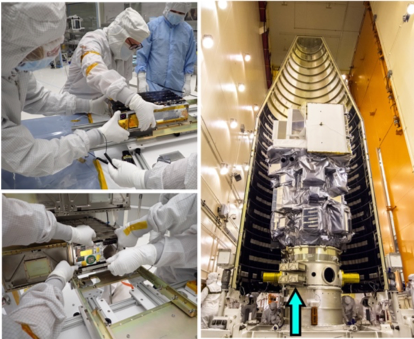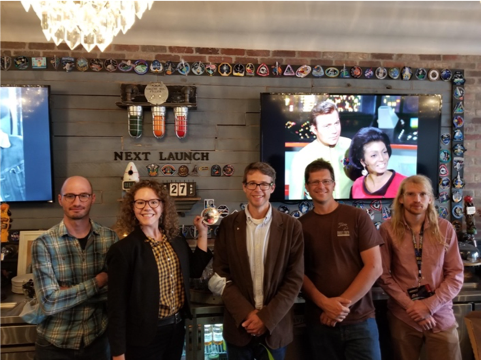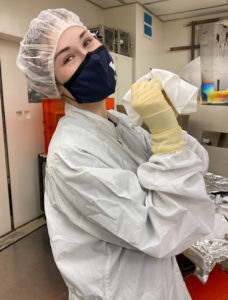
Meet Arika! Arika works on the Colorado Ultraviolet Transit Experiment (CUTE) project at CU and has been with the project since 2017. CUTE is a CubeSat, which means its volume is described by 6 ‘1 U’ cubes, where each U is 10cmx10cmx10cm. CUTE is a 6U CubeSat, with 6 cubes stacked 2 across by 3 deep. CubeSats were created at the California Polytechnic State University originally as a teaching tool and they are now being used as platforms for astronomical instruments.
Arika’s team is using CUTE to study exoplanetary atmospheres. Exoplanets are planets that orbit stars other than our own, and astronomers find many of them using the “transit method.” Basically, when a planet passes in front of its host star, the brightness, or the amount of light we detect from that star, reduces slightly. If brightness fluctuates at regular intervals, we can conclude we have discovered an exoplanet! Short period planets, or planets that orbit their star very quickly (on the order of just a few Earth days), are easiest to detect with this method. This is because the more often the exoplanet passes in front of its star the easier it is for us to detect it. The transit method is also very good for detecting large planets, because larger planets block more starlight than smaller planets. Often these bigger planets are gassy like our gas giants Jupiter and Saturn, but if they exhibit a short orbital period, it means they are much closer to their star than Jupiter and Saturn are to our own sun. We call these types of planets ‘hot Jupiters’.
When a gassy planet is close to its star, like these Hot Jupiters, interesting things begin to happen to the atmospheres. When gasses heat up, they expand. The close proximity to their host star causes the atmospheres of these Hot Jupiters to inflate. In some instances, the atmospheres are inflated beyond the gravitational boundary of the planet. As you move away from the center of an object, its gravity becomes weaker. Using the mass of the exoplanet, we can calculate the gravitational boundary, or the maximum distance from the planet’s center that gasses can expand before they are no longer gravitationally bound to the planet. Once atmospheric particles pass this distance, they are free to float away, a phenomenon called atmospheric escape. CUTE’s goal is to observe hot Jupiters where atmospheric escape is occurring so that we can understand the physics behind the atmospheric mass loss.

When Arika started with CUTE in 2017, the project had been planned and designed, but not yet built. Arika lead the optical calibration efforts and was responsible for much of the mechanical assembly and disassembly. CUTE is one of NASA’s first astrophysics CubeSats so Arika helped to design the tools and setup for testing CUTE’s telescope and optical equipment. CUTE Arika’s and CUSP’s first CubeSat, and Arika and the team dove in head-first to learn how to make CUTE a successful observatory.
CUTE launched in September 2021 from the Vandenberg Space Force Base in California. Arika and colleague Nick DeCicco installed CUTE into the launch receptacle in mid-July, and they returned to the launch site with the CUTE team to watch the launch (or what could be seen through the thick cloud cover that day)! CUTE is now in the data collection and analysis phase of the project. CUTE is expected to collect data until Summer 2023, and, depending on outside factors, may continue collecting into 2024. Arika spends her current time with CUTE gauging the detector background levels to more accurately extract the stellar and transit signal and understand the physics behind atmosphere escape for each observation target. To learn about atmosphere escape, CUTE is looking at the absorption spectrum of light as the exoplanet transits the host star. While stars emit light at all wavelengths, material between the star and CUTE absorb some of that light, which causes dips in the brightness of light detected at certain wavelengths. Where the dips occur depends on what absorbs the light, creating an absorption spectrum. Arika can then use the observed absorption spectrum during exoplanet transit to determine the planet’s atmospheric composition.

Arika is also working with undergraduate student Caleb Kumar, Postdocs Dolon Bhattacharyya and Ambily Suresh, instrument engineer Nico Nell, and CUTE’s Principal Investigator Kevin France to create commands for CUTE’s observations. These are then sent to the operations center, where Sierra Flynn and team translate the commands to CUTE’s programming language and send them up to CUTE. CUTE is has so far observed multiple transits of four exoplanetary systems.
But how did Arika get to this point? Arika always liked space and working with her hands. She learned about instrumentation while on an REU at the University of Wyoming. There she got to use their 2.3m diameter telescope on Jelm Mountain. This was her first time working hands on with telescopes and seeing the complexities of scientific instrumentation. She also met a graduate student who made their own spectrograph and worked at the observatory on Mauna Kea in Hawaii – and from there that was Arika’s dream! While looking for graduate programs, she saw CU’s instrumentation program and its focus on hands-on work with hardware, and we became her top choice. She also loved Boulder’s connection to the natural environment. As an undergraduate at Northern Michigan University she often spent time out in nature, near Lake Superior, so finding a place with so much opportunity to be outdoors was a key factor in her decision to come to CU. These days Arika uses her free time to read, hike, and run – enjoying all the outdoors the area has to offer.




